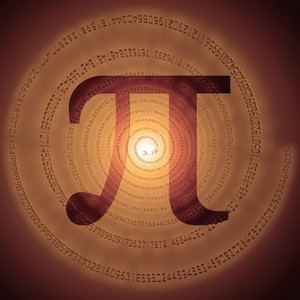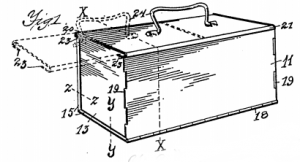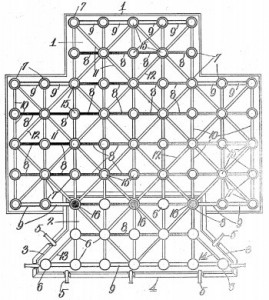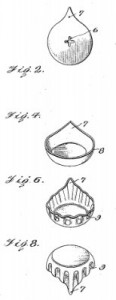Editorial Note: Happy Pi Day everyone! This once in a lifetime event has prompted us to get in touch with our inner geek to celebrate the moment. This article was published on 3-14-15 at 9:26 am Eastern Time. Enjoy!
_____________________
 The urge to innovate has pushed mankind to pursue some odd goals over the years. The pursuit of pi, the numerical constant which represents the ratio of a circle’s diameter to its circumference, is a subject which has driven mathematicians to extremes. Pi, commonly understood to be 3.1415 is an irrational number and as such can be computed infinitely.
The urge to innovate has pushed mankind to pursue some odd goals over the years. The pursuit of pi, the numerical constant which represents the ratio of a circle’s diameter to its circumference, is a subject which has driven mathematicians to extremes. Pi, commonly understood to be 3.1415 is an irrational number and as such can be computed infinitely.
It’s believed that computing a constant like pi to 39 digits after the decimal is sufficient to perform cosmological equations leading to the calculation of the entire universe’s volume down to the precision of a single atom. Computing pi to about that point would be enough for all the practical uses of that numerical constant and most mathematical equations that use it only require the inclusion of two digits after the decimal point (3.14). Yet there are people who continue to pursue a more exact calculation of pi. In January 2010, a French computer programmer managed the calculation of pi to almost 2,700 billion decimal places on a laptop. The computational processes involved were completed in 131 days. Just the number itself took up 1,000 gigabytes of memory on the laptop used to compute it. Speaking each decimal number aloud would take tens of thousands of years. In August of that same year, a pair of programmers completed the computation of pi to five trillion digits.
It’s not just the calculation of pi that has driven people to accomplish some amazing goals. With so many digits available, of course a few people have striven to memorize as many of those digits as possible. On November 20th, 2005, Chinese citizen Chao Lu set the Guinness world record for memorizing and reciting pi to 67,890 places. It took Lu 24 hours and four minutes to complete the recitation, which was witnessed by eight officials.
Every year, there are a surprising number of people and organizations that celebrate March 14 as Pi Day. The calendar date 3/14 comes around once every year but this year is 3/14/15, which is pi calculated to five digits (3.1415). The next time this will occur will be 100 years from now, making this year’s Pi Day a once in a century event. Unless medical science advances at an incredible pace and soon, this will be a once in a lifetime event for all of our readers, unless there might be a toddler perusing our website and even then the chances are slim. The numerological potential of this year’s date has been setting off a maelstrom of $3.14 pizza deals and dessert pie giveaways everywhere. You can bet that there will be those who watch the clock at 9:26 and 53 seconds in the morning just to have witnessed the alignment of ten digits of pi. If you’re a student applying to the Massachusetts Institute of Technology, that will be the exact moment when you can log into the school’s admission website to see if you were admitted into the incoming year’s student body.
It’s clear that people will do some incredible things for pi and that some mathematicians have really developed a taste for it. Here, we thought that it might be interesting to look back a few centuries and see how innovation has changed since the last Pi Day. It’s a relatively safe bet that most people lived through 3/14/1915 not knowing the trillions of digits of pi that would be calculated or that it could take more than a day to recite all of the digits. We can’t look into the future ourselves and see where the trail of pi will lead, but perhaps we can look back to gain some appreciation for the direction in which we’re headed.
The patents discussed below were provide to us by the patent search firm Walsh IP.
[Patent-Search]
Inventions from the Most Recent Pi Day
Pi Day, especially this hundred-year anniversary, has been an eventful day in the past, although not without reason. The last time that it was 3/14/15, most of the globe was in the throes of the First World War. WWI activity on this date seems to be pretty light; the most major event going on in the conflict seems to be the scuttling of the German light cruiser Dresden off the coast of Chile after a skirmish with British troops.
 We were able to find about 100 patents that were issued between March 9 and March 16 one hundred years ago this week. Some of them give us a pretty unique view into what people were working on developing in the early parts of the 20th century. At that time, the cutting edge of technological development included the convenient transportation of lunch from the home to work. U.S. Patent No. 1131638, entitled Folding Lunch-Box and invented by Henry A. Larson of Jamestown, NY, claimed a folding box with hinged side plates and a cover that can be slidably engaged by beads incorporated into the hinged side plates.
We were able to find about 100 patents that were issued between March 9 and March 16 one hundred years ago this week. Some of them give us a pretty unique view into what people were working on developing in the early parts of the 20th century. At that time, the cutting edge of technological development included the convenient transportation of lunch from the home to work. U.S. Patent No. 1131638, entitled Folding Lunch-Box and invented by Henry A. Larson of Jamestown, NY, claimed a folding box with hinged side plates and a cover that can be slidably engaged by beads incorporated into the hinged side plates.
 Ways of having fun were important to at least some people a century ago. U.S. Patent No. 1131603, which is titled Amusement Device and assigned to Helmuth F. C. Dueberg of Kansas City, MO, protected a game board designed to represent an attacking field and a defending field, the attacking field having more resting points than the defending field, upon which an attacking force of fifty “men” can attack a defending force of three men. The gameboard is formed like a cross and could be made from a variety of materials, including wood and cardboard. Of course, business was also very important back then. U.S. Patent No. 1131602, which is titled Check-Protector and assigned to Willard D. Doremus of Washington, DC, disclosed a check protector includes a supporting frame, a shaft, type wheels rotatably mounted on the shaft, a platen that cooperates with the type wheels to create an impression from an inking roll. The innovation was designed to expedite the process of marking checks and money orders.
Ways of having fun were important to at least some people a century ago. U.S. Patent No. 1131603, which is titled Amusement Device and assigned to Helmuth F. C. Dueberg of Kansas City, MO, protected a game board designed to represent an attacking field and a defending field, the attacking field having more resting points than the defending field, upon which an attacking force of fifty “men” can attack a defending force of three men. The gameboard is formed like a cross and could be made from a variety of materials, including wood and cardboard. Of course, business was also very important back then. U.S. Patent No. 1131602, which is titled Check-Protector and assigned to Willard D. Doremus of Washington, DC, disclosed a check protector includes a supporting frame, a shaft, type wheels rotatably mounted on the shaft, a platen that cooperates with the type wheels to create an impression from an inking roll. The innovation was designed to expedite the process of marking checks and money orders.
It’s interesting to note how antiquated some of these inventions now seem given the passage of time. Printing presses are being used less and less as the Internet has grown in importance, but 100 years ago, inventor Michael Clinton of Philadephia, PA, was assigned U.S. Patent No. 1131642, entitled Paper-Heater for Printing-Presses. The patent protected a combination which involved a revolving heated cylinder which would be “yieldingly impelled” toward the cylinder of the press. The invention accomplished a few goals, including reducing the static charge on paper for easier handling in a printing press and the ink dries more quickly. Land rolling isn’t a job that we think much about anymore, but people were also trying to perfect that technology back then. U.S. Patent No. 1131654, simply titled Land Roller, claimed a roller comprising a shaft, a sleeve surrounding the shaft, boxings secured in the ends of the sleeve, inner and outer cylindrical drums, a plastic filling between those drums and reinforcing elements embedded in the plastic filling for engaging the sleeve. The plastic filling increased the weight of the roller so that roll land and crush clodding; the material was also inexpensive.

 Horse racing experienced a fairly important improvement thanks to the work of inventor George W. Cook of Neosho Rapids, KS. U.S. Patent No. 1131679, issued under the title Thill-Tug, claimed a sleeve-like device adapted to be mounted on a shaft with two loop openings which serves as a means for attaching portions of a harness to a vehicle shaft. The invention achieves a method of being releasably held on a harness for a horse that improves operation over the leather tug harness which was a conventional form at the time.
Horse racing experienced a fairly important improvement thanks to the work of inventor George W. Cook of Neosho Rapids, KS. U.S. Patent No. 1131679, issued under the title Thill-Tug, claimed a sleeve-like device adapted to be mounted on a shaft with two loop openings which serves as a means for attaching portions of a harness to a vehicle shaft. The invention achieves a method of being releasably held on a harness for a horse that improves operation over the leather tug harness which was a conventional form at the time.
Finally, we noted what seemed like a pretty neat technology for manufacturing caps for sealing bottles and jars. U.S. Patent No. 1131676, entitled Process of Forming Bottle-Caps, was assigned to Horace M. Cake of Washington, DC. It protected a method of manufacturing a cap by gripping a stock over portions to be severed as blanks, cutting a series of adjacent blanks upon contiguous lines, cupping and crimping the blanks’ edges by compression and removing blanks from the compression devices. The innovation was intended to improve the manufacture of bottle caps by ensuring there would be less waste stock lost between the blanks as they were cut.

![[IPWatchdog Logo]](https://ipwatchdog.com/wp-content/themes/IPWatchdog%20-%202023/assets/images/temp/logo-small@2x.png)

![[Advertisement]](https://ipwatchdog.com/wp-content/uploads/2024/03/IP-Copilot-Apr-16-2024-sidebar-700x500-scaled-1.jpeg)
![[Advertisement]](https://ipwatchdog.com/wp-content/uploads/2024/04/Patent-Litigation-Masters-2024-sidebar-early-bird-ends-Apr-21-last-chance-700x500-1.jpg)

![[Advertisement]](https://ipwatchdog.com/wp-content/uploads/2021/12/WEBINAR-336-x-280-px.png)
![[Advertisement]](https://ipwatchdog.com/wp-content/uploads/2021/12/2021-Patent-Practice-on-Demand-recorded-Feb-2021-336-x-280.jpg)
![[Advertisement]](https://ipwatchdog.com/wp-content/uploads/2021/12/Ad-4-The-Invent-Patent-System™.png)







Join the Discussion
One comment so far.
Dresden Patent
June 17, 2015 05:48 amFischer, the great American chess champion, famously said, ‘Chess is life.’ I would say, ‘Pi is life.’ Daniel Tammet